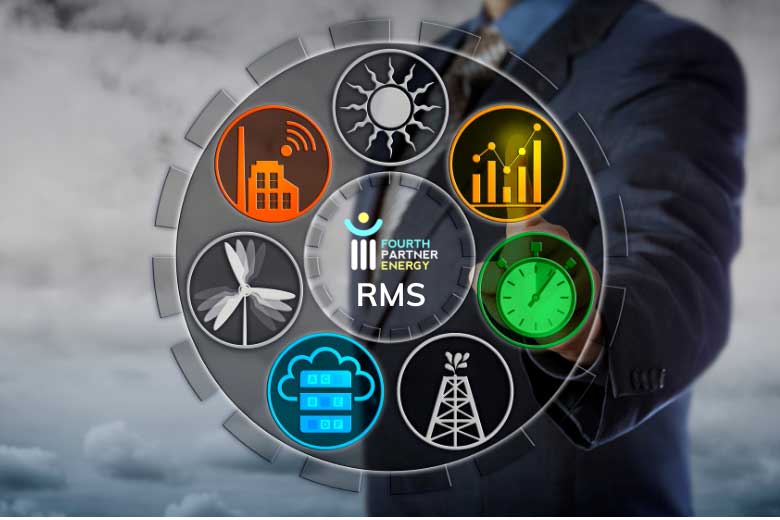The Significance of Remote Monitoring of Solar Plants & 4PEL’s cutting-edge technology offering
Siddharth Gorecha
November 2021

Remote monitoring of solar power plants is critical to realize returns on the investments. In a nutshell:
REMOTE MONITORING -> BETTER UPTIME -> INCREASED GENERATION ->INCREASED SAVINGS
HOW DOES THE REMOTE MONITORING OF A SOLAR PLAN BENEFIT THE OFFTAKER (CLIENT)?
The business impact of a good Remote Monitoring System (RMS) is that it saves 15–25% of annual Operations & Maintenance (O&M) costs, increases asset lifetime and site uptime as well as maximizes profitability, alongside increased generation.
Other advantages include reduction in number of physical visits to the site (a major boon in the post-pandemic world), real-time actionable alerts and quick diagnosis of glitches or failure of plant, easy access to multiple sites at a time, weather correlation and benchmarking, thereby enabling immediate trouble shooting. Hence, it is extremely beneficial to both the solar developer, as well as the offtaker to opt for remote monitoring of the plant.
At 4PEL, we have developed an in-house IoT-based RMS system that offers predictive maintenance, asset tracking and analytics to the client – all via a single mobile application.
COMPONENTS & FUNCTIONING OF A SOLAR RMS
The modern Solar RMS should not only help you remotely monitor the plants, but should also control its functioning, monitor grid power quality, protect the Diesel Generator (DG) during power outages, ensure Zero Feed In (ZFI) to the grid where net meters are not available, provide a ticketing solution to keep assign and keep track of the issues identified. At 4PEL, our RMS also provides features for detailed review and comparison for root cause analysis and helps in the monthly invoicing to the client.
It is important to remember that the functions of an RMS may vary based on whether you are a solar developer, owner of a Capex solar plant, have an Opex solar plant at your premises or are in an Open Access agreement with a solar developer.
The components of an RMS system are the hardware (devices which are installed at the plant) and the software (which includes the server, where the data is stored, the web app, the mobile app and APIs).
Changing of RMS systems in the middle of a solar plants planned life should be avoided because of issues with continuity of data and added costs. Therefore, it very important to ensure the selected RMS will serve the stakeholders’ needs for the next 25 years, which is the lifetime of a solar plant.
KEY FEATURES TO KEEP IN MIND WHILE SELECTING RMS SOFTWARE
- A mobile app is mandatory
- The system should have multi-users and multi-level access user creation functionalities
- The landing page of the web/mobile app should not overwhelm the user with too many data points
- The landing page should have separate modules for detailed analytics whenever needed for root cause identification (The typical Inverter can share up to 100 data points)
- The system should be flexible enough to add new KPIs, graphs and configure different notifications at later stages
- The system should have APIs so that it can be integrated with other systems like an ERP or an invoicing software
- The software should support controlling features like ZFI and DG protection
KEY FEATURES FOR THE RMS HARDWARE
- Hardware should be 4G ready. With the advance in telecom technologies, the older technologies like 2G and 3G networks are getting affected and the support for them is reducing from the service providers
- Hardware should support OTA / remote configuration and updates
- The hardware should be easy to install and configure at the sites
- The hardware should support controlling features like ZFI and DG protection
TECHNOLOGY & INNOVATION AROUND RMS
- AI & ML
- Automatic deemed generation calculation
- Advanced ticketing system
- Support for energy storage
- Accurate predictions
An RMS system supports the O&M team. Identification of issues remotely is just one part of the O&M process. The RMS system should assist the O&M team in their processes like creation of tickets, tracking and managing them. It should be able to churn out data like MTTR and other operation KPIs.
With the advances in AI and ML, we should look out for advances features like automatic calculation of losses due to issues at the site, predict the generation accurately, accurate and localized weather predictions, accurate soiling loss calculation should become standard.
4PEL’s RMS has been designed keeping in mind the need for constant upgrades, while ensuring flexibility and data accuracy to the client. Our Remote Monitoring Software assists our Operations and Maintenance teams to ensure maximized generation at the client side. It is one of our salient features that offers a leg up against competition and enables us to retain our position as Corporate India’s Top Solar Energy Company.